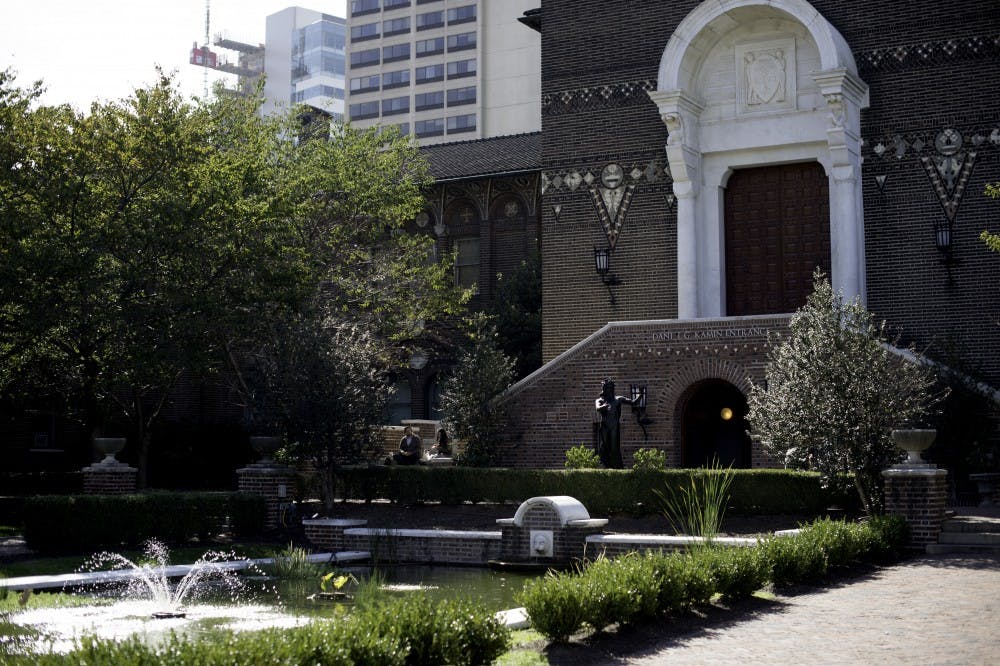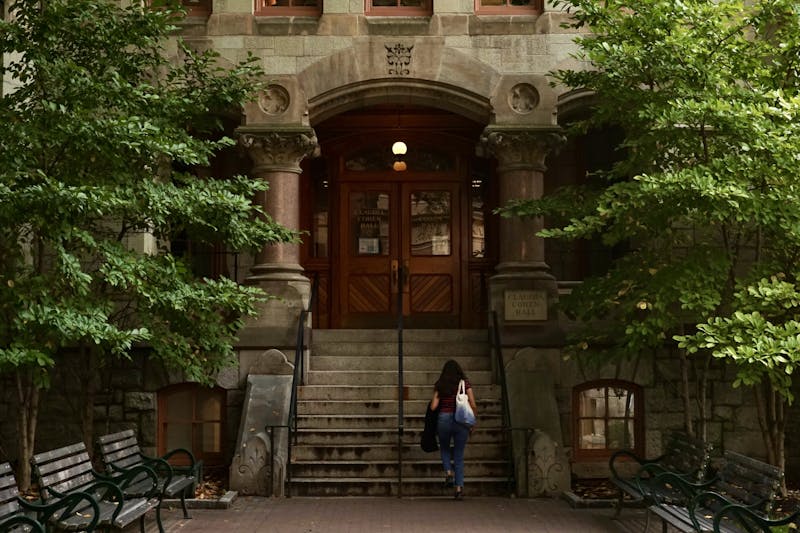
Museum officials take lengthy precautions to preserve their collection from nearby demolition.
Credit: Alex Fisher , Alex FisherWith demolition underway at nearby Penn Tower, the University of Pennsylvania Museum of Archaeology and Anthropology braces for impact.
As work progresses on demolishing Penn Tower to make way for a new Hospital of the University of Pennsylvania patient pavilion, the Penn Museum is taking precautionary steps to protect its collections.
The museum began its preparations last spring, with the installation of vibration sensors, led by Dr. Andrew W. Smyth, a professor of Civil Engineering and Engineering Mechanics at Columbia University specializing in structural mechanics. Smyth previously led a similar project at the Metropolitan Museum of Art in New York.
The sensors trigger phone and email alerts if they detect vibrations that exceed one millimeter per second. These alerts provide demolition and construction workers with continuously updated information on how to regulate their work.
Smyth said the sensors have been placed specifically to check especially sensitive supports, including floors, shelves and cases, which produce an “amplification effect” when impacted by outside force.
These concerns have been considerations for the project since plans emerged to demolish Penn Tower 18 months ago. In coordination with the museum and other nearby buildings, the choice was made to take down the building floor by floor, rather than by implosion.
Patrick Dorris, associate vice president of Real Estate, Design & Construction for Penn Medicine, said that 21 floors have been removed from the tower, with demolition expected to be completed by August 2016.
However, museum officials are still preparing for the riskiest stage of the project — the early construction following the demolition. When the construction begins, workers will begin striking the bedrock that the museum is built on.
The construction poses a particular risk for the museum’s Egyptian Lower Gallery, or Sphinx Gallery, which was constructed in the 1920s and has an outer wall that faces the ongoing Penn Tower demolition site.
Robert Thurlow, Penn Museum Registrar's Office Special Projects manager, said work is already underway to protect the museum’s Egyptian collection. To protect current installations in the gallery, the museum is using sorbothane, a rubberized shock absorbent material, to keep installation platforms from carrying vibrations from construction upward to the museum’s artifacts. The Egyptian storage collection, which contains over 40,000 artifacts, will also be moved to an off-site storage facility during construction. Thurlow also said the museum will launch a conservation project for its collection of Egyptian murals, which are made of fragile materials like mud, straw and plaster.
Thurlow said he hopes to provide a “teaching experience” with the conservation efforts surrounding the nearby demolition. At the museum’s Artifact Lab, visitors can witness museum employees in the conservation department preparing vulnerable artifacts for display, including artifacts of ancient Egyptian burial rituals, mummified remains and small models of ships that were intended to carry people to the afterlife.
“Our goal is to impact the stuff that’s on display as little as possible, but also teach people some of the conservation techniques and the importance of caring for our objects,” he said.
The Daily Pennsylvanian is an independent, student-run newspaper. Please consider making a donation to support the coverage that shapes the University. Your generosity ensures a future of strong journalism at Penn.
DonatePlease note All comments are eligible for publication in The Daily Pennsylvanian.







